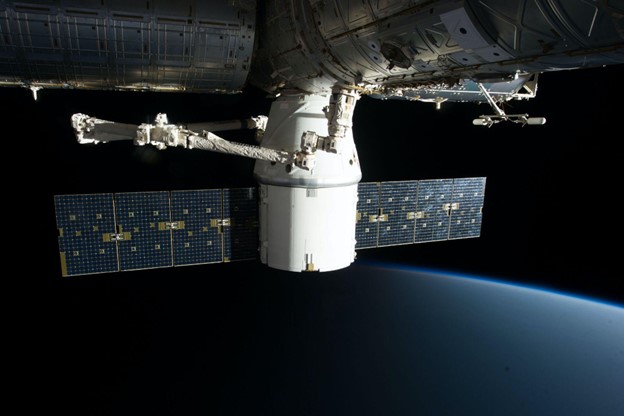Satellites and spacecraft could not function or accomplish their missions without both the space bus and payload. These components are essential for the proper functioning of any space vehicle. They have an interdependent connection, which means one could not work without the other. Space bus supports the entire space vehicle, whereas the payload gathers data. Both bus and load accommodate mission requirements. Without satellites or spacecraft equipped with space buses and spacecraft payloads, we couldn’t explore space or conduct scientific research in low Earth orbit and beyond.
Table of Contents
What are the bus and payload?
A space bus is the primary structural component of a satellite or spacecraft. Without it, space vehicles would not launch, maintain orbit, communicate between them, gather data, or accomplish any mission. Space companies build satellite and spacecraft buses following the same design patterns. However, these components can differ in structure and other technical details. This is because engineers develop them according to each mission. Space buses feature various subsystems, but more about this later.
Spacecraft payload consists of those satellite or spacecraft components that produce mission data and relay it back to ground stations. Its functionality is limited by four types of constraints. These constraints can be fundamental, programmatic, mission, technological, etc. Even if the technology behind payloads is advanced, some missions are impossible for different loads because of these constraints. As you have most likely realized by now, payload constraints are not only physical but also scientific and societal, especially as far as mission requirements go. Societal, in this case, implies analyzing spacecraft payloads refers to costs, regulations, risk, schedule, etc.
Space bus components
As mentioned, the structure of the space bus consists of different subsystems. These subsystems are Electrical Power Subsystem (EPS), Command and Data Handling Subsystem (C&DH), Communications Subsystem (CS), Attitude Control Subsystem (ACS), Propulsion Subsystem (PS), and Rocket Thrusters and Propellant Subsystem (RT&P). EPS ensures that a satellite or spacecraft has enough energy from the Sun to remain in space and accomplish its mission. When it comes to C&DH, this subsystem can be associated with the brain of a satellite or spacecraft. ACS makes sure the Observatory is in a stable orbit and shows where Science Instruments should point to gather data. As its name suggests, the CS works to receive instructions from the Operations Control Center (OCC) and transmit data back to it. Maintaining orbit would not be possible without PS, whereas the RT&P is essential for orbit correction or station-keeping. All these subsystems are advanced technological components that make up all space buses. However, a space bus has many other components, depending on its mission.
Structure of spacecraft payload
Spacecraft payload structure is as complex as space bus structure. Space missions would not exist or be successful without payload instruments. When it comes to some technical details of spacecraft payload, these are classified into observation, in-situ, action at a distance, human spaceflight, navigation, and communications payloads. To better understand what an entire payload structure does, think of observation payloads that use remote sensing technology. Communications payloads can be unidirectional or two-way systems. Two-way systems don’t only gather but also transmit data. In-situ loads measure environmental signals that sensors can’t detect. Action at distance payload refers to how useful cargo technology can affect space objects without touching them. Navigation payload helps determine the satellite’s orbit by transmitting S and L5 band navigation service signals. Human spaceflight is also part of the spacecraft’s structure payload and refers to any components that help humans conduct space research or experiments. Human spaceflight payload also works for astronauts to manage daily operations on space stations or work with space lab equipment.
What are the differences between a payload and a spacecraft bus?
As you have probably noticed so far, a bus and a useful load are not the same. The main differences between these two components are mainly technical and structural. The payload consists of antennas, transmitters, spectrometers, receivers, etc. The space bus makes up the rest of the spacecraft or satellite structure. It consists of subsystems that provide power, telemetry, attitude control, commanding, and other primary functions. Buses carry both subsystems and payload, whereas useful cargo ensures imaging, navigation, or communications when a satellite or spacecraft is in orbit. These two important components also have different purposes. While a space bus is the main structure where most spacecraft operations take place, the load takes measurements and sends data to the bus. Both systems are essential, and space missions could not be accomplished if one of them would not function properly.
A satellite bus and spacecraft payload are two completely different systems that work together to ensure a satellite or spacecraft can succeed on its mission. They have different designs as well. Moreover, they’re made from distinct components that work in synergy. A satellite or spacecraft could not launch or function without either a bus or load.


